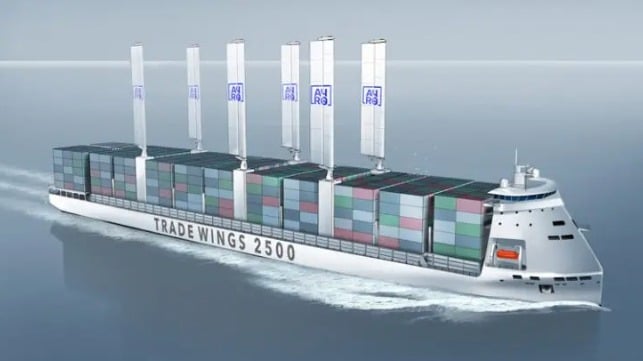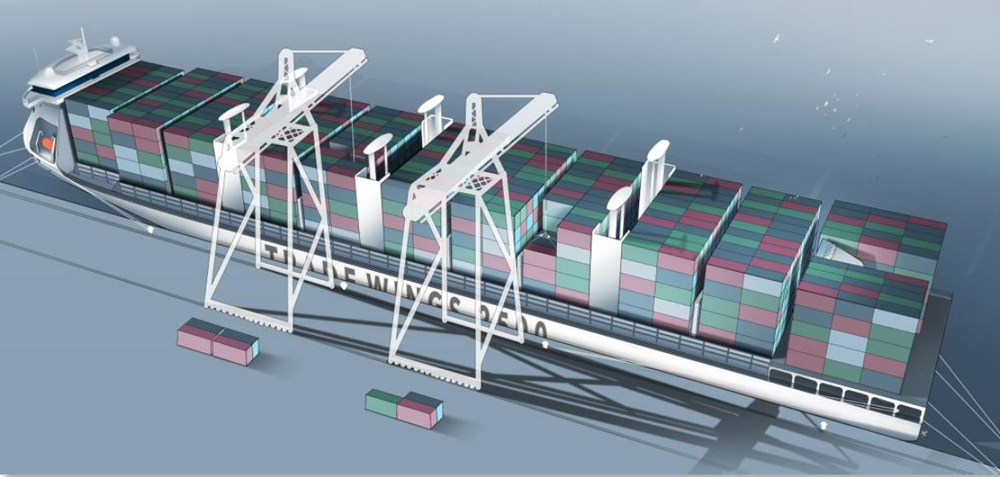Concept for Wind-Assisted Containership Receives AiP from BV

The maritime industry is exploring different concepts for harnessing wind energy as part of the efforts to reduce emissions and improve ship operations. The latest concept to be advanced is for a short sea or feeder containership that combines wind with an LNG power plant and advancements in design to create a more efficient vessel. Known as Trade Wings 2500, the design has been awarded an Approval in Principle (AiP) from Bureau Veritas.
The concept is for a containership with a capacity of 2,500 TEU. It is a combination of wind-assisted propulsion with six Oceanwings and LNG-electric propulsion with pods. The wing sails are installed on a vertical sliding mechanism to partially retract while the vessel is in port to reduce interference with cargo operations. The LNG storage tank is based on GTT’ Mark III containment system and the LNG power plant is a 4-strokes gensets. It is a flexible platform that would make it possible to transition to future fuels such as Ammonia or Hydrogen.
According to the designers and BV, the Trade Wings 2500 will save on average 35 percent CO2-equivalent emissions compared to a conventional design. Their calculations were made based on a typical 4,000 nautical mile transatlantic route comparing the Trade Wings operating at the same speed to a convention ship with a 2-stroke engine, single shaft, and without wing sails. The Trade Wings’ Oceanwings accounts for 57 percent of the reduction with the optimized LNG thermal propulsion delivering the remaining 43 percent of the reduction in emissions.
“Wind-assisted propulsion is a high-potential solution that can contribute to the long-term decarbonization of the marine industry,” said Alex Gregg Smith, Senior Vice-President, Bureau Veritas North Asia. “We have just released new wind propulsion system rules – and this innovative design, approved in principle by BV, demonstrates the feasibility of wind-assisted propulsion on board container ships with deck space limitations.”

Sails are retracted to permit cargo operations (BV)
Created in a partnership between French firms VPLP Design, Alwena Shipping, and AYRO, and the Chinese Shanghai Merchant Ship Design & Research Institute (SDARI), the concept is for a 32,500 dwt containership. It would measure 646 feet in length with a beam of 105 feet.
According to the companies, the design is suitable for short sea shipping or feeder operations in Europe, Central America, the Caribbean, and China. The Trade Wings 2500 could also operate on the transatlantic trade.
In addition to the retractable sails, the vessel features other design considerations for its commercial operations. Benefitting from a coverless hatch and LNG electric pod propulsion, the design provides both operational flexibility and improved efficiency to reduce port time. The propulsion pods increase maneuverability while the coverless hatch design speeds up cargo operations.
